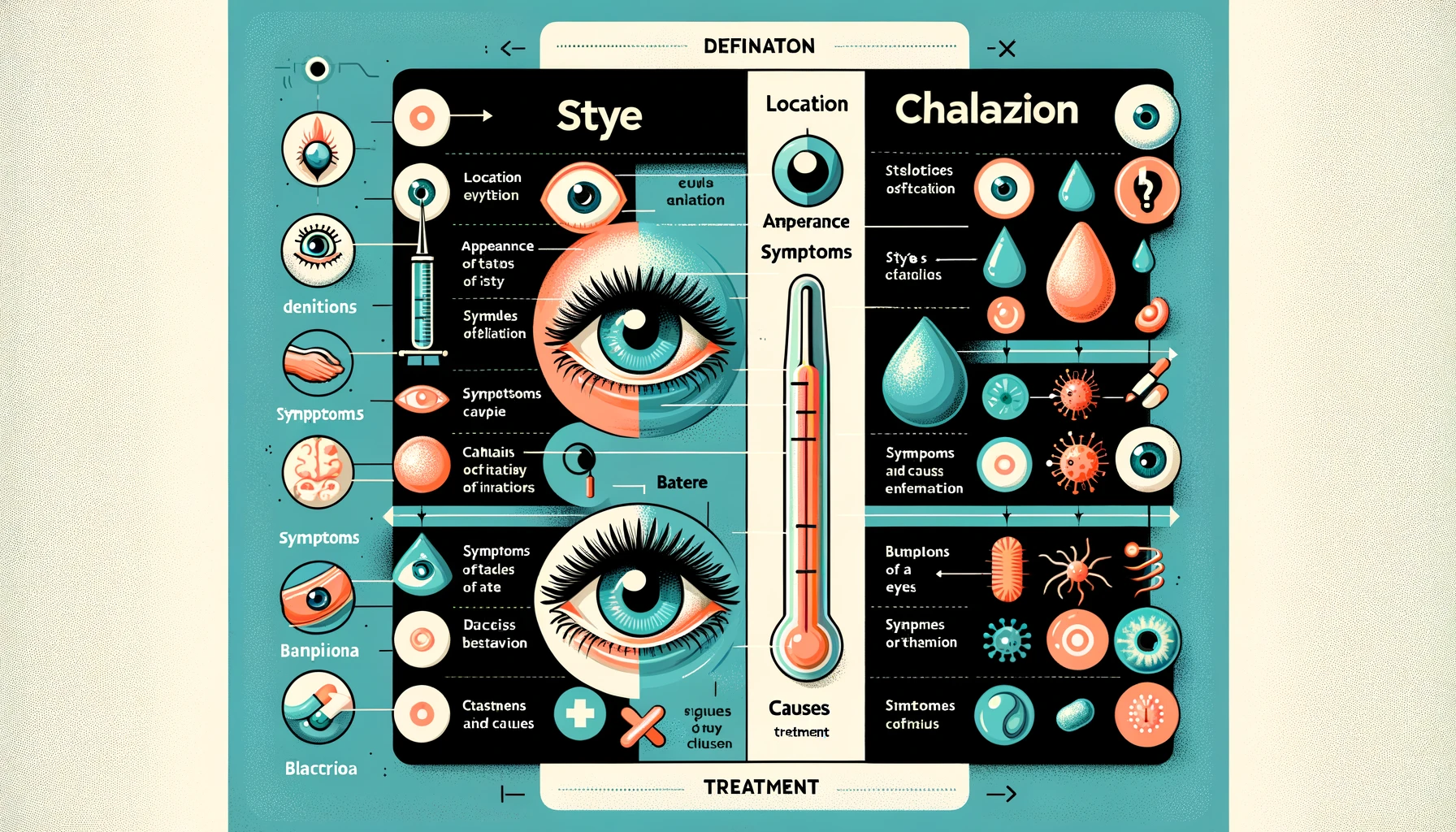Chalazion and stye are two pathological manifestations of an inflammatory type, which can affect the eye area and specifically the eyelids. It is not easy to distinguish them from each other: in this article we will see how to recognize them, how to distinguish them and we will analyze the causes that can generate them, such as dry eyes during the winter or simple contact with dirty hands. To conclude, we will also evaluate the main remedies to use to prevent and alleviate these ophthalmic manifestations.
How to understand if it is a sty or chalazion?
Experiencing eye inflammation and swelling can be unpleasant, but understanding the differences between a chalazion and a stye is critical to properly managing these symptoms. Both are eye conditions, but they present in different ways and require slightly different approaches:
- A chalazion is a painless bump caused by inflammation of the meibomian glands in the eyelid. It is a larger and localized swelling on the inside of the eyelid compared to the stye, which is located on the outermost margin of the eyelid. Unlike stye, chalazion is generally not painful and can persist for several weeks at the ocular level. Another substantial difference is that the chalazion is not infectious in nature and, therefore, cannot be contagious
- Stye , on the other hand , is an acute infection of the sebaceous glands at the base of the eyelashes or sweat glands of the eyelid . Therefore, in this case the infectious process is the basis of the pathological manifestation. A sty appears as a small, painful, red, swollen bump along the eyelid margin . Sometimes, a small white dot may form, indicating the presence of pus within the affected area, while other times it is not visible but shows a very red and swollen eyelid (blepharitis). Being infectious in nature, styes require more stringent hygiene of the affected area and hands, to avoid spreading the infection to the other eye or to other people.
What are the key Difference Between Stye and Chalazion?

Here’s a comparison between a stye and a chalazion in tabular format:
| Feature | Stye (Hordeolum) | Chalazion |
|---|---|---|
| Definition | A stye is a painful, red bump near the edge of the eyelid, caused by an infection of the oil glands. | A chalazion is a typically painless lump or swelling in the eyelid, resulting from a blocked oil gland. |
| Cause | Infection, often by Staphylococcus bacteria. | Blockage in the Meibomian gland (an oil gland in the eyelid). |
| Location | Usually at the base of an eyelash, on the eyelid. | Typically farther up on the eyelid than a stye. |
| Pain and Tenderness | Generally painful. | Usually not painful, but can become tender if inflamed. |
| Symptoms | Redness, swelling, pain, a small pus spot at the center of the bump, sensitivity to light, and tearing. | A rounded lump in the eyelid, may cause blurred vision if large enough, and sometimes mild irritation or redness. |
| Duration | Styes often come to a head and release pus within a few days, and resolve within a week. | Chalazions grow more slowly and can take months to resolve without treatment. |
| Treatment | Warm compresses, eyelid hygiene, antibiotics if infection spreads or is severe. | Warm compresses, eyelid hygiene, corticosteroid injections, or surgical removal in persistent cases. |
| Recurrence | Can recur, especially if underlying eyelid hygiene or other issues are not addressed. | Less likely to recur once treated, but new chalazions can form if the gland continues to be blocked. |
| Risk Factors | Poor eyelid hygiene, stress, hormonal changes, and use of old or contaminated eye makeup. | Chronic blepharitis, rosacea, high lipid levels, and use of thick eye makeup or lotions that can block glands. |
Understanding these differences is important for proper diagnosis and treatment. If you suspect you have either a stye or a chalazion, it’s best to consult a healthcare professional for an accurate diagnosis and appropriate treatment plan.
Conclusion
Styes are bacterial infections that are often painful and can be treated with warm compresses and sometimes antibiotics. Chalazia, on the other hand, are non-infectious blockages of the oil glands, typically painless, and usually respond to warm compresses or steroid injections.